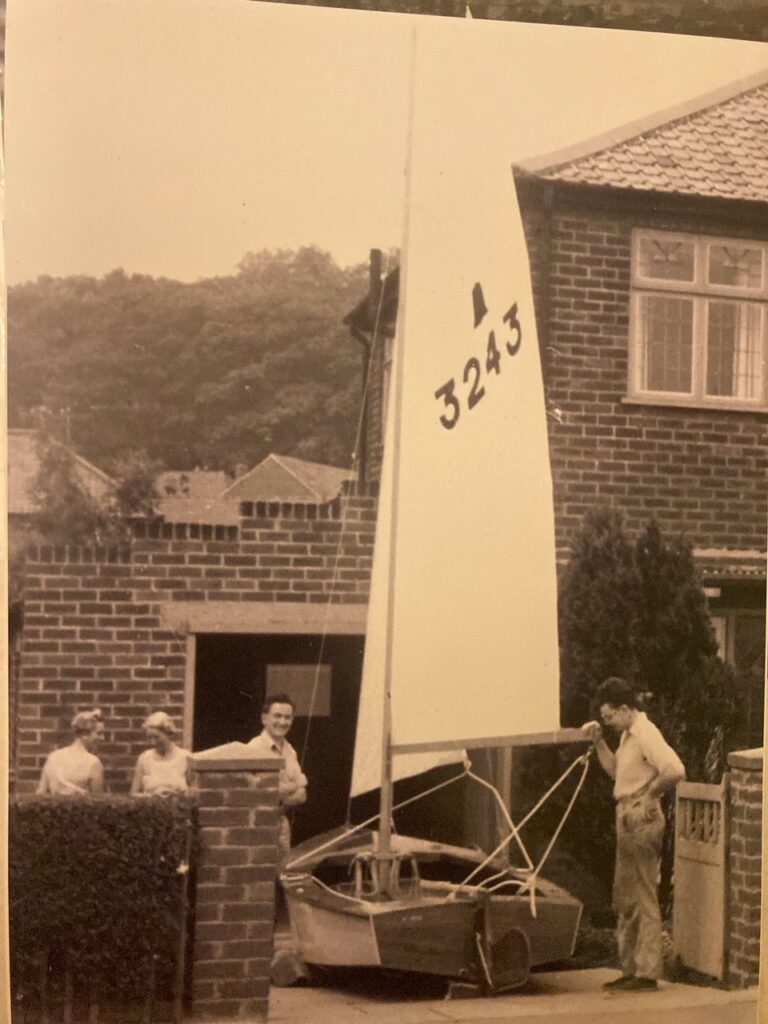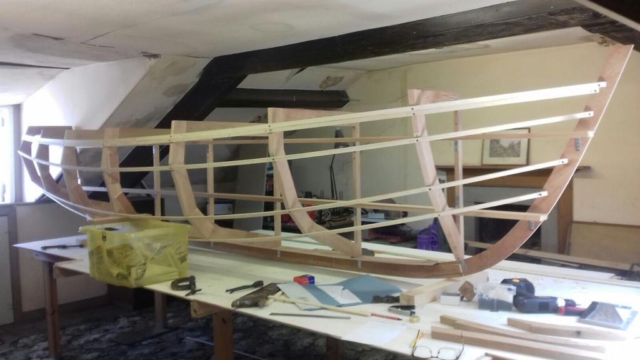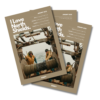By Caroline Oswald
I am North Shields born and bred, with grandparents on both sides having worked on the Fish Quay. My great-grandfather was the skipper of a Shields fishing trawler, and his grandson must have inherited his sea legs.
My dad, Peter Irving, first fell in love with boat design after seeing the beautifully made vessels at Tynemouth Boating Lake on a trip there with his father. Aged 14, he started learning how to design and build his own boats in the back yard at home, including a canvas covered canoe and his own version of the Cadet, a hard-chine sailing dinghy designed by Jack Holt to teach young people between the ages of 10 and 16 how to sail.
Despite a mishap involving capsizing his canoe and having to be rescued by his dad who dived into the lake, he persevered with learning to sail and enjoyed many a day’s outing all along the River Tyne, between Tynemouth Haven and Ryton Willows. In 1952, at the age of 16, Peter began an apprenticeship at Lambie’s boat yard in Wallsend.

On his first day he was placed under the direct supervision of Geordie Booth, who turned out to be the very man who had made all the Tynemouth rowing boats that had first inspired him.
When he described the boat he had started building at home, Geordie said “Well you’ll learn to build proper boats here, Pete!” The young apprentice wore bib and brace overalls with a front pocket in which you kept your pencil and your blind man’s rule (a three-foot folding ruler with imperial measurements).
He describes walking in on his first day to a thick fug of blue smoke, with blazing braziers and the sound of hammering tools.
His first job was to ‘take the cans in’, i.e. return the tin cans with tea leaves in the bottom to the lady in the attic stock room, whose job it was to refill them with hot water. Geordie had just started planking a new boat and my dad learned to ‘hold on’ with a hammer while another apprentice ‘clinked’ or ‘clenched’ the nails (a form of riveting).
There was no place to eat your ‘bait’, the men just sat on the staging planks on trestles in front of the braziers. There were several men from the same families working at the yard, including the Booths and the McConachies.
The foreman was called Tommy Moody and my dad worked with many talented boat builders such as Geordie Booth, Walter Booth, Jimmy Morris, Jack Thompson, Bill Aitcheson, Bill McConachie, and Bob McConachie, the driller, who tended the fire for the steam box boiler, that went from one end of the yard to the other.
The boat painter was Neil McConachie and the engineer was John McConachie. Morison Lambie himself was an impressive looking chap with a little moustache who always wore a dark suit and a Homburg hat.
Fellow apprentices included Danny Patterson, Matty Archer, the strong Eddie Brown who could carry a whole keel on his own and John Kerr, who eventually set up his own boat yard in Wales. My dad also remembers the Scots who had different names for things such as ‘sand stroke’ instead of ‘garbord strake’ (the nearest plank to the keel).
Peter and the men worked on a good variety of boats, including the 24-foot Trinity House made from larch with full planks, used for taking men and supplies to the life houses and to and from ships.
The men turned out these skilfully made wooden boats at a phenomenal rate, and became experienced at planking them up by eye rather than using moulds. All they had to go on at first was the LOA (length overall), the beam (widest point) and depth of the boat. The boat yard’s main trade was life boats but they also made other types of vessel including naval whalers, work launches and the occasional pleasure launch with an in-board engine.
Peter completed his national service in the RAF for two years and returned to Lambie’s to
find that they had introduced fibreglass boat building. Dick Hartley was a designer who had
just joined and who had designed a new fibreglass eight-foot pleasure dinghy.
He asked Peter to ‘loft the lines’, which means translating the information from plans into full-size templates. He was relied upon to ’fair off’ (check and correct) the lines for many boats to come, including a new design of a 20-foot lifeboat. At the age of 24 he was made
chargehand of a 28-foot lifeboat, a big responsibility.
If you’ve been captivated by the story so far, get ready for more in the upcoming June issue. Part 2 of the tale promises to unravel even more adventures.

































